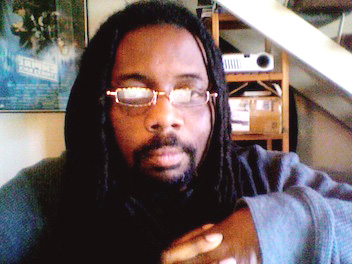Pro Screenwriter Dwayne Smith On The Importance Of Outlining
For any writer trying to come up with an efficient, tested writing process, outlining is key. It simplifies the process, clarifies the roadmap, and allows the writer to get a stronger handle on his craft, figuring out intricate plot points in the outline, rather than in the script itself. But don’t take it from me. To get more insight on the importance of this often over-looked writing tool, I turned to my friend, pro screenwriter Dwayne Smith, whose gone on record time and time again, detailing the critical role that outlining has played in his own success. With a slew of sold pitches and specs under his belt, an upcoming novel and a couple of features made of his scripts recently wrapped, Dwayne’s insight about outlining goes a long way. In this generous guest blog encompassing all things outlining, here is what he had to say:
I read a lot of screenplays. I get ‘em from friends, from the contests that I judge, and I try to keep track of recent spec sales. All too often I run into scripts where it’s obvious that the writer did not bother to outline the story.
How do I know?
Usually, when a story trails off in some random direction or stalls awkwardly I begin to suspect that the writer was making it up as he went along. And usually I’m right.
Whenever I question a writer suspected of this crime, the exchange typically goes something like this:
I’ll say, “Let me ask you something. Did you outline your screenplay?”
They’ll reply, “Yes. Well, kind of.”
“Kind of?”
“Yeah. I wrote down some ideas. I knew what direction the story was going. You know.” “Right. So, then you didn’t outline?”
If you fall into this category, you’re not alone. Like I said, I run into this all the time. And if you’re serious about your screenwriting, it has to stop.
YOU MUST OUTLINE.
The next question that always comes up is, how much to outline. Since the outline serves as the blueprint for your screenplay, the answer should be obvious. Think about it like this: How detailed should the blueprints be for a skyscraper? Should the architect have only a rough idea about how the building will be constructed, or should he know every detail down to the smallest bolt?
Okay, that analogy is a bit extreme, but I think my point is clear. An outline should be very detailed. A scene by scene breakdown of your entire story from beginning to end. The dialogue for every scene should also be touched on in your outline. Before you ever open Final Draft you should know and understand every last scene of your screenplay.
Sounds a little nuts, right? Sounds like a lot of work, huh? It’s far easier to just sit down at your computer, with a seed of an idea, and pound out the first thing that comes to mind. More fun to do it that way also. Sure, I get it. You’re eager to get cracking. You got a story in you that’s just bursting to get out. Studios are going to stand in line to write you checks.
Outlining is a key tool that separates the professional screenwriter from everyone else out there with a copy of Final Draft.
I know a good number of very successful screenwriters, and without exception, they all create extensive outlines for their screenplays.
Me, I’m a crazy outliner. My outlines are 30+ pages long. I call ‘em DEEP OUTLINES. When I tell new writers this they usually give me a weird look. Some even laugh. Even you might be thinking, “Why waste so much time on such a long outline? Just write the damn screenplay already.”
Here’s an obvious secret. The real work in screenwriting is writing the outline.
If you’re sitting in front of a blank Final Draft page, you’re in the mindset that you’re writing the actual screenplay. With every keystroke there’s a pressure to get it right.
Creating a deep outline first, frees you from that pressure. Because it’s JUST an outline, you feel more at liberty to make changes and to experiment. You can move scenes around or entire acts around. Try doing that in an actual screenplay. Once you’re deep into the script changes are far more complicated which means you’re more likely to simply stick with what you have instead of trying out a better idea.
Another cool benefit of a deep outline is that, when all you’re planning is done, writing the actual screenplay is easy. All that’s left is to put your story in screenplay form and add dialogue. Instead of pounding your head over plot you can focus on the voice of your characters and making your screenplay a breezy read.
Do you need to write a 30 page outline? No. Regardless of how many pages it takes you just need to know EXACTLY what happens in each scene.
Must you stick exactly to your outline? No. Sometimes, as you write dialogue, the characters begin to do the unexpected. I love it when that happens. If you’ve planned your screenplay properly these occasional diversions should not stray too far from your planned story path. If they do, close Final Draft, rebuild your outline, then continue writing.
Are you serious about your writing? Do you want to be seen as a professional?
Professional screenwriting is a craft that requires careful planning, mastered technique, and creative discipline.
Anyone can wing it.
ABOUT DWAYNE ALEXANDER SMITH
Working professional screenwriter represented by Resolution and Circle of Confusion. I have sold or optioned six spec screenplays and I have been hired by studios for numerous rewrites. Currently I have two movies in post-production, Stuck and The Closet. Both are due to be released in 2014. My first novel Forty Acres is scheduled to be published by Simon & Schuster in July.


“Anyone can wing it.”
BOOM!
I love this one!! 🙂